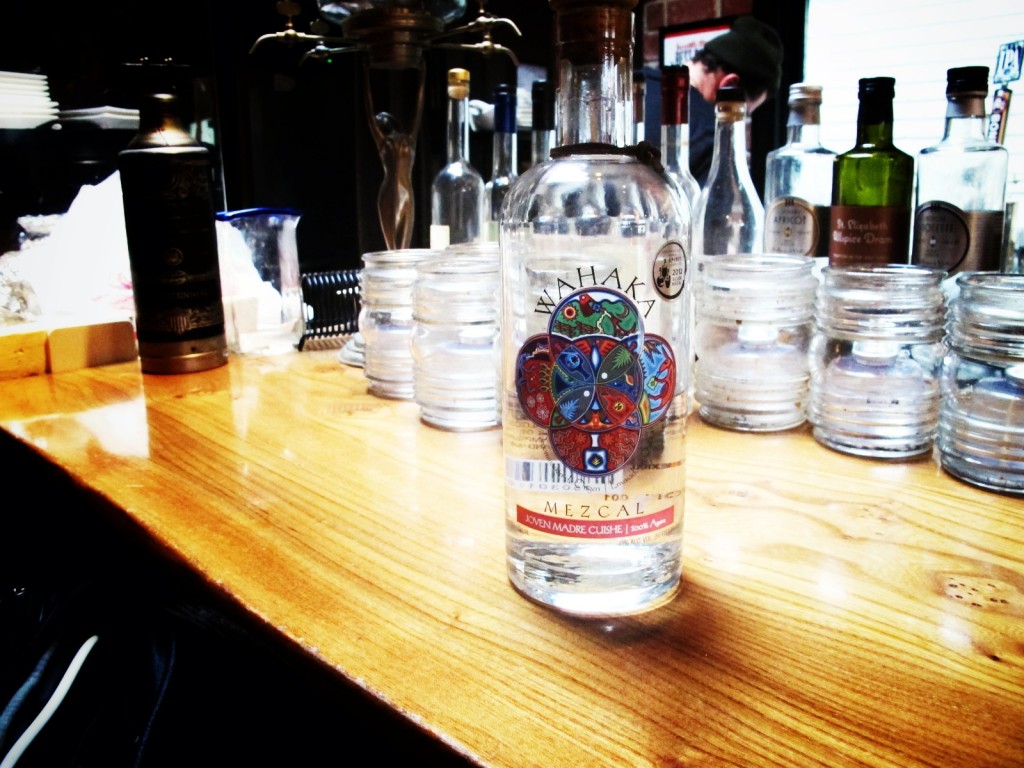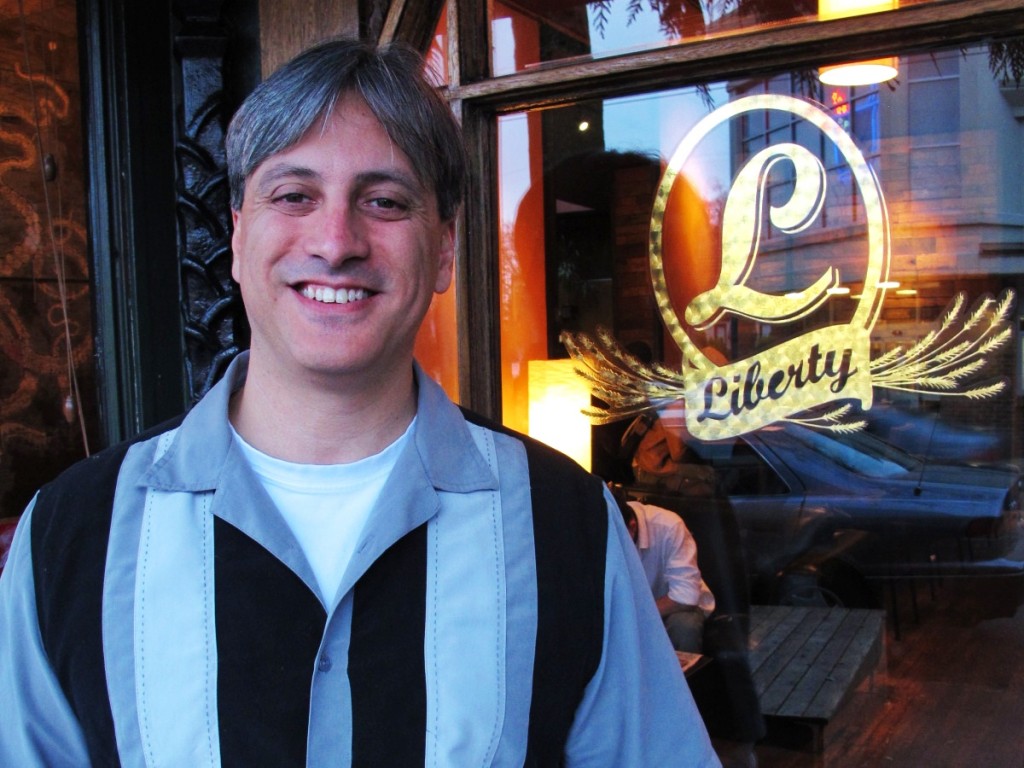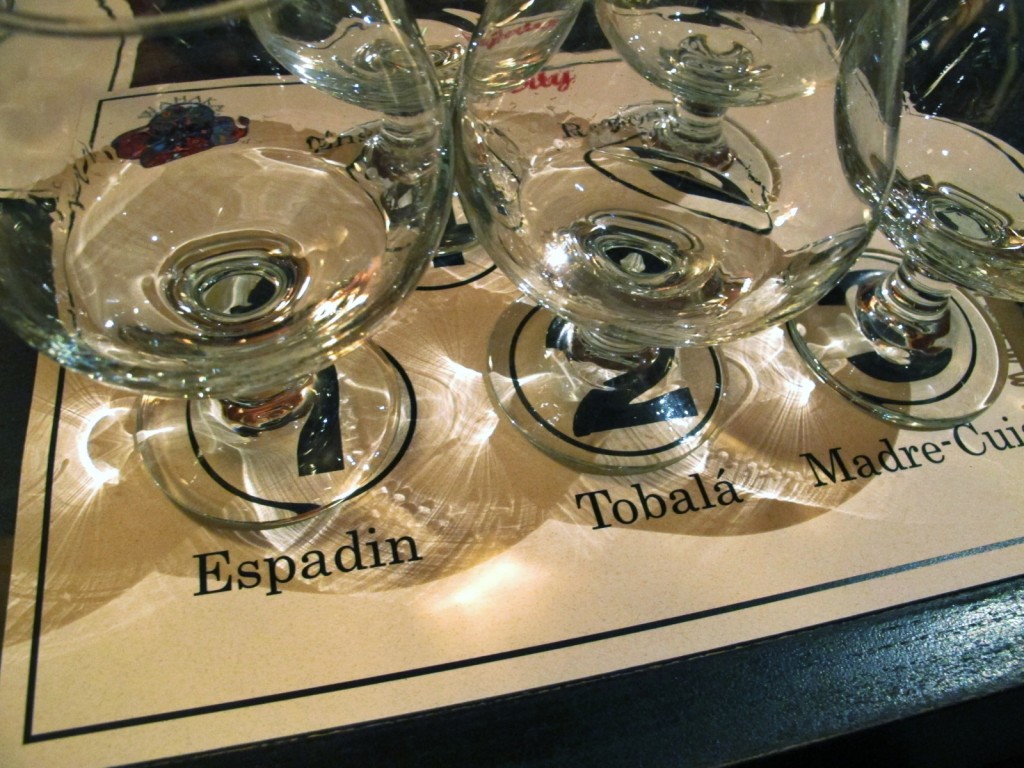Who am I? Where am I? What year is it, and why am I wearing this clown costume? That’s what usually happens when I even think about tequila. Luckily, today wasn’t tequila, it was mezcal – Wahaka Mezcal – and I came out unscathed.
Wahaka is a play on the name Oaxaca (the Americanized way to pronounce it) which is a city, state and ‘Denominacion de Origen’ – an official designation for one of the regions where mezcal can be made; one of 8. The Whisky Guy (hey, that’s me!) was invited to a tasting of 5 different bottlings of Wahaka Mezcal at Liberty – a bar in Seattle’s Capital Hill neighborhood. Not one to pass an opportunity like this, I jumped at the chance.
My biggest take away from the whole thing? There are over 200 varieties of the Agave plant – only about 40 are turned into a distillate; tequila and mezcal are both varieties of agave distillate. Think of it like wine – each varietal of grape has a different flavor and produces a different flavor of wine. Similarly, each type of agave is made into a different flavor of distillate. Even until the late 19th century, tequila was known as “Mezcal de Tequila.” Different than tequila, mezcal must use a minimum of 80% agave (tequila is a minimum of 51%).
Most people would say 2 things about mezcal – that it’s ‘smokey’ and ‘isn’t that the one with the worm?’ Yes, and yes – but not always. Let’s get into it.
Making mezcal is very similar to making tequila (it is, after all, a very similar product), and not too different from making whisk(e)y. The plant is harvested by a “Jimador,” then cooked, ground to a pulp, fermented, then distilled. While the beginnings of the tradition of putting worm in the bottle is shrouded in mystery (which is more accurately a larva, not a worm), it’s a very new tradition (only since the 1940s) and using bugs in day-to-day cooking in that area is very common. The smokey flavor is a much easier story – it’s because of how the agave is cooked.
First, build a large fire with wood and river rocks. Once that’s good’n’hot, cover it with a layer of mulch/moss, then put the agave on, cover again with a tarp and let it cook – for 3-5 days. It’s this slow-roasting process with the wood – and the smoke from the wood seeping into the agave – that gives the agave its smokey flavor (much like how barley is peated for Scottish whisky). Some newer mezcals skip this process, and therefor do not have the smokey notes. There’s also some conversation about whether mezcal should be matured/aged in casks – some do, some don’t. Purists would say that you must use the stone and wood, slow cooking method (‘La Coccion’) and must not mature – and the debate continues. Wahaka uses a combination of these, using La Coccion for cooking the agave, and bottling both unaged and aged mezcal.
The seminar was lead by one of the partners in the company, Raza Zaidi, and Eduardo Belaunzaran, West Coast Sales Manager for Wahaka Mezcal. Both born in Mexico, they came to the US as college-aged friends wanting to change the world of mezcal (and tequila) and are now business partners with founder Alejandro Santa Cruz and Alberto Morales, their Mezcalero (Mezcal-Maker).
Wahaka is available in the US in limited quantity, but is not too difficult to find – ranging from $35-100. From the guys themselves, they have no interest (and couldn’t handle) sales to mega-retailers like Costco (who alone would likely take up more than 1/4 of their annual supply); they are likely to “top out as a small batch mezcal.” They bottle 5 different styles – Espadín, Tobalá, Madre Cuishe, Ensamble and Reposado (which is both the only to be aged and the only that is bottled with a ‘gusano’, or larva).
The tasting started with the Espadín; a ‘Joven’ (unaged) mezcal. This was my first time really analyzing mezcal and I was surprised at how similar it is to tequila. The name is a reference to the type of agave used (which is also the spanish word for ‘sword’). Some mezcal makers use ‘Pachuga’ (a bag of meat which is placed in the stills during distillation to add flavor, similar to adding botanicals to gin) – Wahaka does not, but often adds fruits and melons to the distillation; I found those flavors coming through mostly in the Espadín. Very clear and thin, it had more of a black pepper flavor (than the white pepper I know from tequila) but developed very quickly into light smoke. Imagine licking a burnt log. It was on fire, and it’s carbonized, but it’s not hot anymore, but not yet ash – that was the finish to me; a little warming.
Next we went to Madre Cuisha; Belaunzaran’s favorite, and would be my pick as well. It’s also at the upper end of price for the Wahaka line. The nose was very nice – very citrusy, but earthy. Think oil being squeezed from a not-yet-ripe lime and you’re in the ballpark. The flavor was much deeper – I had to dig for the citrus, but it was there. I found a lot more white pepper (customary for an agave distillate), very earthy. Almost muddy. I was a little disappointed in the finish; there really wasn’t one, but was very clean on the palate. Most agave (for mezcal or tequila) has the piña (the heart, or ‘pineapple’) growing below ground with leaves sprouting up. The Madre Cuisha, tho, looks more like a Joshua Tree; a short stalk with the piña in the air. It’s chopped down by the Jimador then shaved to go through the rest of the process.
Next up was Tabalá, another reference to an agave variety. I’ve been told other Tabalá mezcals can be very potent – Wahaka’s is very approachable; easy. There was something medicinal about it, like powdered aspirin. I could easily see it being used in a cocktail – maybe a float or mixed in to balance something sweet.
Ensamble is very unique in the mezcal world. Most get their names from the variety of agave used where ensamble is a blend of 3 varieties of agave. This was easily the most balanced of the bunch; much more luscious than the others. The melon was very apparent here too (more of a honeydew than cantaloup) but had nice spice and white pepper.
We finished with the Reposado (‘rested’). This is the only mezcal in the Wahaka line that is matured (tho only for 4-6 months) and is the only “Con Gusano” (‘With Larva’). It starts as Espadín before going into casks (which cannot, by law, be new casks). Being a vegetarian, this is the only one I didn’t taste but the nose had great vanilla added to everything the Joven Espadín had to offer on the nose.
If you’re in the Seattle area and would like to experience Wahaka Mezcal, catch the guys on Tuesday, Dec 10 at 7:00pm at Coa in Roosevelt or on Wednesday the 12th at 7:00pm at Calle in Mount Vernon. Wahaka has lots to offer all palates – whether looking for traditional mezcal flavors and techniques or something more modern with its balanced and more fruit-forward flavors, Wahaka has something for you. I look forward to continuing my adventure in Mezcal, with Wahaka and beyond. Won’t you enjoy a dram with me?
Updated 12/11: I incorrectly identified the fermented agave liquid as ‘pulque’ when that is a separate product all together and has nothing to do with the mezcal-making process.
;
About the Author:
The Whisky Guy is an educator, host, blogger , habitual traveler and more, having worked in the whisk(e)y industry for over 10 years. He can be reached through the Contact page and you can find out more by visiting the About page. He always supports enjoying whisk(e)y responsibly.


